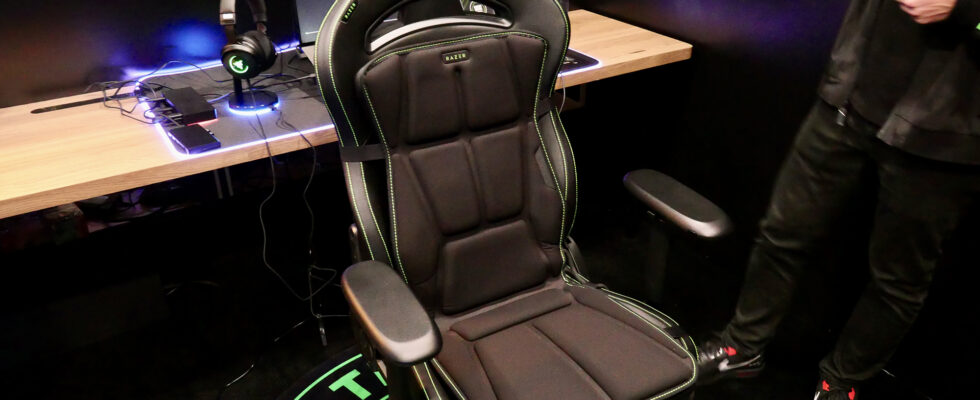The Singaporean brand Razer is taking advantage of CES 2024 to highlight its latest innovation, promising never before seen immersion in the world of gaming.
If you no longer know what to get after RGB mouse pads, keyboards with interchangeable keys and 57-inch ultrawide screens, Razer will create a new need for you: the haptic feedback cushion.
Independent actuators for more immersion
CES 2024 is above all a show designed to present the latest news and innovations in tech. It is therefore the perfect opportunity to talk about the future and about products which are only projects; like Project Esther from Razer. Under this pretty name hides a cushion with haptic feedback (in other words a vibrating cushion) to be placed on top of a gaming chair, dedicated to increasing immersion in video games. Everything is still in the planning stage and is, for the moment, not intended for sale.
The Project Esther features no less than 16 haptic actuators distributed in strategic locations across the entire cushion, from below the thighs to the middle of the back. The whole thing is able to vary in intensity, speed and duration of vibration, while moving through the cushion and therefore not limited to an overall and uniform sensation.
Razer fans can rest assured: despite the little information given by the brand on this subject (not to say that they strictly don’t talk about it), CES was the opportunity to discover that Project Esther is well equipped with RGB light strips. Because it is well known, RGB increases the number of FPS on the screen. It remains to be seen whether Razer intends to make this project a commercial product and whether it will also include these light effects.
Cutting-edge technology dedicated to gaming
Behind this cushion is Razer Sensa HD Haptics technology, a technology capable of controlling different actuators at the same time to produce haptic feedback in different locations; exactly how Project Esther works. But this technology is not limited to that, it has also been designed to coordinate several compatible devices. So let’s imagine an equipped controller, a bit like Nintendo’s Joy-Con and their HD vibrations, as well as a headset and you will be able to immerse yourself in a video game like never before. And why not, eventually, add a massage functionality to calm down after a boss that’s a little too difficult in Baldur’s?
If this is not on the agenda, it is undoubtedly one of Razer’s projects for the coming years. However, the development teams will have to play the game and integrate all this technology into their productions, otherwise it will not be possible to feel the best possible sensations on the cushion of the snake brand. Fortunately, Razer Sensa HD Haptics is capable of producing vibrations from audio streams; it is therefore entirely imaginable to benefit from it in games not optimized for, but also in front of a film or while listening to music, all with a response time of 20ms made possible by the wireless connection 2.4 Ghz equipped products.
Then, because coricorico, it is important to note that Razer Sensa was developed by the Lille company Interhaptics. And it is also thanks to their SDK that the haptic feedback technology will be usable by other manufacturers wishing to offer their own vision of the vibrant gaming setup.
Source : Razer

6